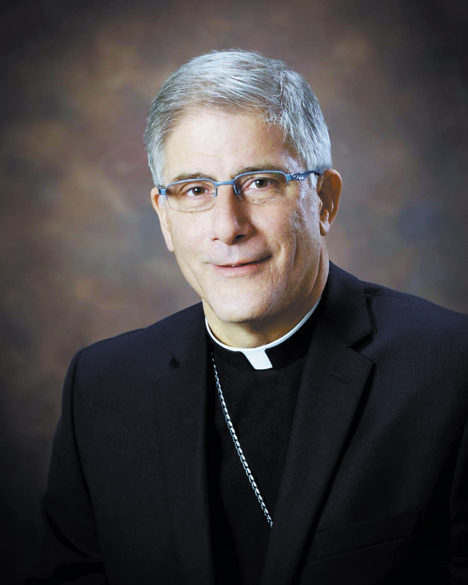By Bishop Joseph R. Kopacz, D.D.
The celebration of the Incarnation, the beginning of the culmination of God’s plan of salvation for humanity, will be celebrated throughout the Christian world over next weekend on the Solemnity of Christmas. In many countries the Lord’s birth will be commemorated at home or in smaller family clusters, but for the majority of the faithful there will be the joyful gatherings in churches with a wide range of languages and customs. For the throngs who do “go to church,” it will be for the celebration of the sacrifice of the Mass, the divine Liturgy, the holy Eucharist, to give thanks to God who so loved the world that he sent his only Son. (John 3:16)

Next weekend there will be the pastoral challenge in the Catholic world of coordinating the schedule of Masses for Christmas eve, Christmas day, and the Masses for Sunday – the feast of the Holy Family. But whatever Masses we attend let us not lose sight of one of the most sublime mysteries of our faith in the Lord Jesus, the bond between his birth, the Incarnation, and the Mass, when and where we celebrate his death and resurrection.
The link between the words from the prologue of the Gospel of John and the words of consecration from the other three evangelists, Matthew, Mark and Luke, as well as St. Paul are enlightening.
From the prologue:
– “And the Word became flesh and dwelt among us, and we have seen his glory, the glory as of the only Son from the Father, full of grace and truth.” (John 1:14)
– The Lord himself handed on to the church, beginning at the Last Supper and continuing for all time, his words of institution and consecration. (Matthew, Mark, Luke and St. Paul) “While they were eating, Jesus took bread, and when he had given thanks, he broke it and gave it to his disciples, saying, Take and eat; this is my body. Then he took a cup, and when he had given thanks, he gave it to them, saying, Drink from it, all of you. This is my blood of the covenant, which is poured out for many for the forgiveness of sins.” (Matthew 26:26-28)
– Several chapters later in John’s Gospel, the Lord unwaveringly wedded his Incarnation with the Eucharist. “I am that living bread come down from heaven! Everyone who eats it will live forever. And the bread I will give is my flesh for the life of the world.” (John 6:51)
Throughout the Christmas season, the Octave of Christmas, and its sacred interval through Jan. 9, 2022 – the feast of the Baptism of the Lord – there is ample time to cherish the fullness of our faith in the Son of God.
Jesus Christ is the true light that has come into the world, so that whoever accepts him is granted the power to be children of God. Each time we gather at Mass as his Body – the church – the risen Christ reveals his glory to us, the glory as of the Father’s only Son, full of grace and truth.
Whenever someone doubts or rejects the real presence of the risen Christ in the bread and wine, which can occur for many reasons, a good place to revisit is the Incarnation of the Son of God.
In the power of the Holy Spirit pray for the grace and truth to see with the eyes of the heart the humanity and divinity of the child Jesus, and the crucified and risen Lord. He shines in glory in His resurrected body at the right hand of the Father and intercedes on behalf of his Body, the church, in this world.
Of course, he would want to feed us with exceptional food and drink – His own body and blood – food for the journey.
As, we grapple with this sublime mystery at various intervals over our life span, and we pray for one another to persevere, as individuals, families and friends with our feet firmly planted in God’s good creation as children of the Most High, who never lose sight of the beckoning horizon of eternal life.
Merry Christmas and peace on earth and goodwill toward all!
